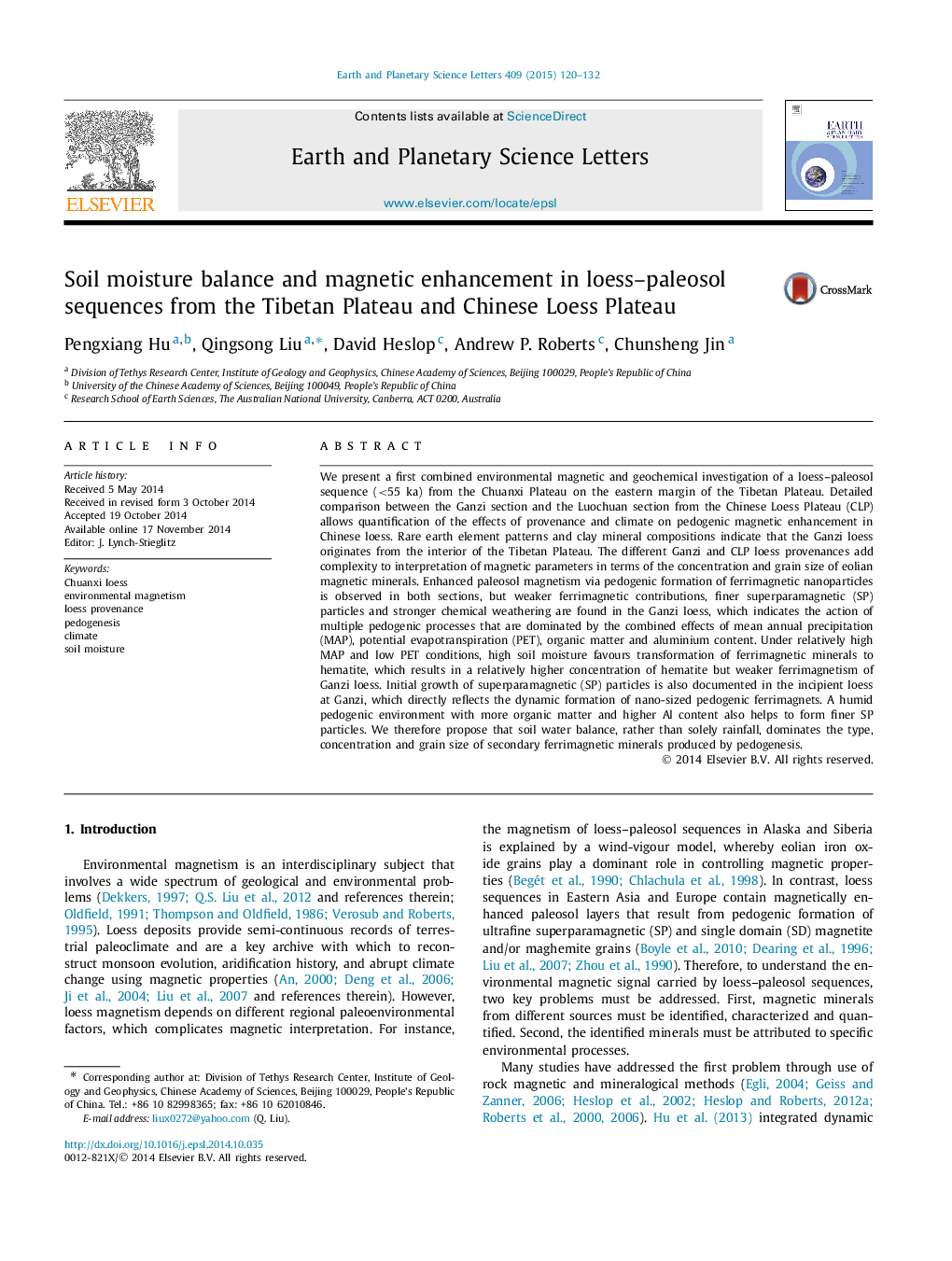| کد مقاله | کد نشریه | سال انتشار | مقاله انگلیسی | نسخه تمام متن |
|---|---|---|---|---|
| 6428825 | 1634747 | 2015 | 13 صفحه PDF | دانلود رایگان |
• We present a first detailed environmental magnetic study of Tibetan loess.
• We compare magnetic and geochemical properties between Tibetan and CLP loess.
• We quantify the effects of provenance and climate on magnetic properties in loess.
• Pedogenesis dominates loess magnetic properties with minor effect of provenance.
• Soil water balance dominates the properties of pedogenic magnetic minerals.
We present a first combined environmental magnetic and geochemical investigation of a loess–paleosol sequence (<55 ka) from the Chuanxi Plateau on the eastern margin of the Tibetan Plateau. Detailed comparison between the Ganzi section and the Luochuan section from the Chinese Loess Plateau (CLP) allows quantification of the effects of provenance and climate on pedogenic magnetic enhancement in Chinese loess. Rare earth element patterns and clay mineral compositions indicate that the Ganzi loess originates from the interior of the Tibetan Plateau. The different Ganzi and CLP loess provenances add complexity to interpretation of magnetic parameters in terms of the concentration and grain size of eolian magnetic minerals. Enhanced paleosol magnetism via pedogenic formation of ferrimagnetic nanoparticles is observed in both sections, but weaker ferrimagnetic contributions, finer superparamagnetic (SP) particles and stronger chemical weathering are found in the Ganzi loess, which indicates the action of multiple pedogenic processes that are dominated by the combined effects of mean annual precipitation (MAP), potential evapotranspiration (PET), organic matter and aluminium content. Under relatively high MAP and low PET conditions, high soil moisture favours transformation of ferrimagnetic minerals to hematite, which results in a relatively higher concentration of hematite but weaker ferrimagnetism of Ganzi loess. Initial growth of superparamagnetic (SP) particles is also documented in the incipient loess at Ganzi, which directly reflects the dynamic formation of nano-sized pedogenic ferrimagnets. A humid pedogenic environment with more organic matter and higher Al content also helps to form finer SP particles. We therefore propose that soil water balance, rather than solely rainfall, dominates the type, concentration and grain size of secondary ferrimagnetic minerals produced by pedogenesis.
Journal: Earth and Planetary Science Letters - Volume 409, 1 January 2015, Pages 120–132
